Outlook for Precious Metals: “Good Shape and Getting Better” - Weekly Wrap Up (May 15, 2020)

May 15, 2020
If you’re a precious metals investor, there’s no reason to beware the Ides of May. With prices rallying “like crazy” and silver rushing forward, host Craig Hemke and Eric Sprott break down all the gold and silver news you need.
In this edition of the Weekly Wrap-Up, you’ll hear:
- The sobering words from The Fed—and what they mean for you
- Why you should be very careful on GLD
- Plus: Eric’s update on the shares
“The other interesting thing that I find incredibly noteworthy is yesterday morning when the market was down—and it obviously went back up yesterday—but Wells Fargo hit a new low? We had the S&P rally 30 percent and Wells Fargo is hitting a new low? What are they trying to tell us? What is the stock market trying to tell us? Even JP Morgan, I think, traded near 140 about two months ago. The low was 76. It got down to… something like 80 or 81 yesterday. Where’s the rally here? Is there something wrong? Is there something wrong in the banking business? What could be wrong?”
Announcer: You're listening to the Weekly Wrap-Up on "Sprott Money News."
Craig: Happy Ides of May. This is your Weekly Wrap-Up, May 15th, 2020. I'm your host, Craig Hemke. Joining us is Eric Sprott. Eric, good morning.
Eric: Hey, good morning, Craig. You know, it's one of the few times that, you know, we're not going to sound like idiots today. Even though lots of people question, you know, the fools that care about precious metals, but those people who have been listening and acting, man, are they in good shape and getting better.
Craig: And getting better. And it's time to buy some physical metal again, my friend. Sprott Money, back open for business. With COVID-19 virtually shutting down all mining and shipping operations since late March, we've been working hard to get the supply lines safely and securely reopened to provide you access to precious metals. And now we've got them. So, you can call us up at 888-861-0775, or just simply go to sprottmoney.com. We've got new products coming in daily, so check back often to see if we have something right for you. It's good to be back in business, and at such a fun time, my friend. Rallying prices like crazy, silver finally, really rushing forward. What are your thoughts as we go to wrap up the week?
Eric: Well, everything looks great. And I think there's even more reasons for greatness that have come up in the last little while. And, for example, we talked about the HSBC thing, where they had 12 exceedances of their value at risk in the month of March. And then a data point came out that they lost $200 million in one day, and pointed to gold, that they got out of line with the gold shorts. It's not easy to lose $200 million a day, by the way. You have to have one hell of a big position short to lose $200 million in a day. And, of course, they didn't have just one day. They had 12 days when they lost money in excess of what they define as their value at risk. So, that's one thing to put in, and it wasn't just them either, BNP Bank in France also was impacted.
The other interesting thing that I find incredibly noteworthy is yesterday morning, when the market was down, and obviously, it went back up yesterday, but Wells Fargo hit a new low. We had the S&P rally 30%, and Wells Fargo's hitting a new low? What are they trying to tell us? What is the stock market trying to tell us? And even JPMorgan, that I think traded near $140 about two months ago, the low was $76, it got down to...it was at something like $80 or $81 yesterday. Like, where's the rally here? Is there something wrong? Is there something wrong in the banking business? What could be wrong? Could every loan be wrong? Could every personal balance be wrong? Could the derivatives be wrong? Could your gold position be wrong? Or, why don't we just say everything's wrong? There's no margin.
Like, of course, it's bad, because look at where the economy is going here. And how do you deal with 30 million people not getting money? And on that same vein, I would say that Chairman Powell's comments that he made on Wednesday were so sobering. I mean, I couldn't believe that he kind of went straight out there. And, of course, the first thing he said was, "Well, it looks like the COVID-19 is not going to recover as quickly as we might have anticipated." Then he went on to say that there was a survey done by the Fed that, of those making less than $40,000 in annual pay, from February to March, 40% of them lost their jobs. Forty percent of them lost their jobs. And, you know, oh, well, thank God that 1500 bucks is going to help, right?
Craig: Right.
Eric: Now that we might be extending into a further, what, three months or something? So, and he also said, and if you stay down too long economically, you can have permanent damage, and what was a liquidity issue can become a solvency issue. Those are sobering, sobering comments.
Craig: No doubt.
Eric: And I'm sure we've all, relate to people who are in a jam, and companies in a jam. It's not difficult. Probably 80% of North America is in a jam, both people and companies. So, where's this market going to go here, and why wouldn't you want to own gold and silver stocks? So maybe we should start talking about the precious metals now.
Craig: Well, yeah. You know, and that's the thing that, for everybody that needs to understand, because I keep hearing this point made on television down here, that we're going to somehow borrow the $5 trillion to $10 trillion that are going to be needed to keep the economy afloat. We're not borrowing anything. It's all going to be created and funded and directly monetized by the Fed. And that's where this has a direct impact.
Eric: Yeah. Of course, it does. And, of course, and if, for example, United States is as liberal with their money as they appear to be, and more liberal than everyone else in the world, everyone else in the world will understand that, and potentially react to that. Like, why are those guys spending that much money, and where are they getting all this money? So, it's a big deal. Oh, just anecdotally, there was a friend of mine, who was speaking with somebody at one of the major banks, and they were talking about some area. I think it was in Houston, that's a sort of a high rent area, you know, where people do a lot of shopping, and there were 50 retail outlets down there. And in the month of March and April, none of those people paid their rents. Zero out of 50. So, we got big problems going on in the economy here, and it keeps, it kept telling you, and, of course, going back to basics in the gold business, you want to have your money out of the banking system.
You had a great interview of James Turk yesterday. What did he say? "Get your money out of the banks." And while we're on getting your money out, how about what's going on in these ETFs? And we have data like, in the case of the GLD, like yesterday, they took on 500,000 ounces, yesterday. Well, that's 125 million ounces a year if you annualize. You know how I love annualizing things. That's a hundred and whatever million... We don't even produce 100 million ounces a year. How can they buy that? Which takes me to the article that Ronan Manly did that pointed out that it looks like the GLD is borrowing gold from the Bank of England in order to pretend that they have the gold in the GLD. There was also a great article by Nick Barisheff, who just basically ripped apart the GLD, how it's a front for non-ownership of gold. So I would caution people on GLD. Be very careful on GLD. I can assure you that the Sprott Physical Funds have the physical product. GLD? I don't know.
Craig: Right.
Eric: I rather doubt it. I rather doubt it, okay? How they could buy these amounts of gold and silver on a weekly basis and daily basis is beyond me. I think, for example, the silver ETFs supposedly took on something like 30 million ounces in the month. Thirty million ounces, that's 360 annualized. We produce something like, we mine something like 900 million ounces, and only a part of it's supposed to go to investing, like maybe 25% of that, but that's 250 a year at the most, or 220 a year. And we're buying the silver into the ETFs at the rate of 360, which means they're not getting it either.
Craig: Nope.
Eric: Somehow they're getting some piece of paper from a bank saying, "We have it here," even though they don't.
Craig: Precisely.
Eric: So, all the more reason for people, like, don't miss, don't make the mistake of believing that you own gold when you own a piece of paper, okay? Unless it's a high quality piece of paper, but I suspect that the GLD and the SLV don't own the precious metal products that they advertise that they own. That's just my own view.
Craig: And it's logistically impossible. I mean, this doesn't take a lot, you know, we're not splitting atoms here. I mean, the GLD has added almost 200 metric tons since QE to Infinity began back on March 23rd. We heard all about the logistic issues, and "the gold's in the wrong place," and "the airplanes aren't flying," and all these other excuses that the apologists came up with. Two hundred metric tons, Eric, another 12, as you said yesterday, 22%, their alleged inventory has gone up. I mean, come on, use your brains. That's promissory notes and warehouse receipts and the like.
Eric: I can give you another data item. I'm sitting here looking at the last nine days of the COMEX in silver. They've delivered 8,000 contracts supposedly. Eight thousand contracts. What we are talking here? Forty million ounces? Forty million ounces they've delivered on the COMEX? Let alone whatever went into the ETF? Are you kidding me?
Craig: This is laughable.
Eric: We're supposed to believe this stuff? Same thing in gold, all these deliveries. And by the way, the open interest was staying very flat. That's why I've started to monitor this every day now. And until the last couple of days, when the open interest has actually had to shoot up, as they try to keep a lid on it... You know, what they do is they short it, so that it won't run up, and, of course, here we turn around today and we got silver up 70 cents and the gold's whatever, up 15, or whatever it is, and it was up strong yesterday. Like, they just can't hold it. They're not going to be able to hold it. We already know there's a problem in the physical thing with the HSBC nonsense, with the difference in pricing between the LBMA and the COMEX, which was basically a failure, as James Turk described to you. So, we have a lot of evidence saying this thing's gonna go a long way, the precious metal stocks.
Craig: Yeah. Well, we should probably turn to that. I've got a lengthy list for you again this week. Anything else on your mind though, before we do?
Eric: I don't think so. I think we should move on. And I'll do one general comment again. I want to re-suggest this. The weighting, of course, of the gold stocks in the TSX is probably pushing 11% or 12% today, because they're the one group that's going up while everything else is going down. And again, most Canadians don't own that percentage. And most Canadian institutions don't own that percentage, particularly because the foreigners are the buyers, and most stocks are listed in Toronto. So, this bizarre situation where the Canadian institutions will never own 11% gold, even though it's a top-performing group, so they'll look like schmucks at the end of every month that they didn't participate, which will make them keep leaning into things. We've seen a lot of issues in Toronto lately. A lot. And probably half the buying's coming from outside the country. So, everything's kind of setting up that way as well in the market generally.
Craig: I would add, I call it the "Rule rule." Eric, you like that one?
Eric: Yeah. It's a good one.
Craig: Your good friend, Rick Rule, told me a year ago. We were talking about this, and he said, "You know, the global asset allocation of the sector is still less than 1%. You know, if it goes to 2%, do you have any idea how much cash that is, chasing a finite amount of investment opportunities?" And I said, "Yeah, that's the 'Rule rule.'"
Eric: Yeah. Because the amount of gold produced in a year increases the world's supply by 1.5%. In other words, that's what you can get in every year, 1.5%, new. And so, to go from 1% to 2%, the stocks have to double. Well, thank God they have doubled, almost.
Craig: They're working on it.
Eric: There you go. And maybe they'll have to double again.
Craig: And again. Well, and to that end, again, we've got a lengthy list. We always invite folks to send in questions. The list is, because this is becoming such a popular segment, Eric, is getting too long for us almost to manage every week. Now, we always go through the names. If you don't hear your name mentioned, it's because Eric didn't have an opinion, didn't know anything about it. And so, therefore, we can't talk about it. But we do have a list this week to cover. And I do want to mention, the "Ask the Expert" segment that we do every month at Sprott Money is going to feature Mickey Fulp this month. So, you can send in your questions at submissions@sprottmoney.com for Mickey Fulp, runs a fabulous free newsletter. And I'll save some of these questions, some of these companies, and ask Mickey when we talk to him next week. But for some of these, Eric, I know you do have an opinion. Let's start with the big picture. A lot of folks asking why the heck is it that Kirkland Lake seems to get the snot kicked out of it repeatedly? Do people just not like the Detour Gold acquisition? What's the deal?
Eric: Yeah. Well, let's put it this way. I mean, I think the stock got down to maybe even something like $25 Canadian, it's now $55, okay? And it has been to the 60s. So, it has recovered pretty well post the Detour fiasco. And of course, the Detour thing was the analysts saying, well, you know, your costs per ton are going to go up because you're doing low grade instead of high grade. To me, that was a non-starter as an argument. It's just totally ridiculous. And so, I would say the stock has reacted back very nicely, and probably well in line with other gold stocks.
I would say the reason for the most recent, I'm going to call it "softness," is I would say that the conference call they had just after the first quarter, where they had no guidance for the year, and no three-year guidance, and, the most important, they didn't have an update on Fosterville drilling, okay? And I thought that was a huge omission. Whether you found any there or not, I think you should at least talk about it. That is an important topic. You know that people realize that if you don't find more at Fosterville, your production will fall off. Now, I have spoken to some of the people that are aware of what's going on at Fosterville, and the sense is that they will find extensions to the Swan zone, and other Swan zones. So, but that's, you know, we don't know that until they tell us that. So I think that's one of the reasons why it softened off a little here. There's a couple of other reasons, general reasons. And I am very aware of that Kirkland Lake Gold, being a high-cost producer, will not be the number one performing stock this year. That is a given. You want to buy crap companies, who, where their costs are like $1,200 an ounce and the price going to $1,700, and now they're making $500 instead of nothing. And those are the stocks that are really going to run here. And they have one other problem. In my mind, the play is silver. The play is silver now.
Now, Chris Vermeulen, who runs Technical Traders, had an article out suggesting that silver could have a sharp break here up to $21 to $23 in the next four to six weeks. Something in that timeframe. That's not very long time. And the way it's acting today, I mean, we're pushing $17 I think on the futures.
Craig: Yeah.
Eric: So, it's had a real quick recovery here, and far outperforming gold. And, of course, I think of the vulnerability of the COMEX traders who can't get the short position down. They have something like 650 million ounces short in silver. Short. And we might only be producing like 50% of what we used to produce, because all of these shutdowns. So that's probably about 450 million out of the mines, and these guys are short 650. And people are moving in. People are, theoretically, buying silver when they buy SLV. They're not actually. But, you know, some people will realize, "I better not buy SLV. I better buy the physical thing." And, of course, we don't have data on the physical thing. I bought a couple of million ounces of silver this year. It's not in any data anywhere. You think I'd ever buy SLV? Forget it. So, you know, there's... Anyway. So, I think silver is going to... Oh, and his long-term target on silver, $78. You can just imagine what some of these things would be trading at. Like, forget you're FAANG stocks, okay? These guys, the money they'd make is silly. So, those are two reasons, two big reasons why it would appear that Kirkland Lake, even though it's a great company, is being outperformed by other things.
Craig: Well, one of those other things could be a company you mentioned a couple of weeks ago called SilverCrest. Do you have any thoughts there?
Eric: Sure. Well, there was a big block went up yesterday, 9 million shares, of which I bought a big part of that, just a little over half, okay? They had some phenomenal drilling results in their Chispas project. These gentlemen are very understated. I think it's going to be much better than they're suggesting. And I think they know it's going to be much better than they're suggesting, but they're going to continue to suggest that, you know, things...they won't produce that much more, but even in the latest news release, they talked about, "Hey, we found these new veins closer to the mill. We weren't even thinking they were there." Well, and they've higher, they're almost twice the grade of what their studies were based on. Well, anybody listening to us knows that grade is everything. When you double your grade, your earnings might go up by 300%. So, that's a very important thing to think of. And I think SilverCrest is going to have very, very high grades when they finally get into production. So, I'm taking a pretty good shot at that one.
Craig: You know, another company you mentioned for the first time a few weeks ago had some interesting developments this week. Call it maybe a tri-merger, Gran Colombia merged with two others. What do you think of the combined entity?
Eric: Well, the theory was that Gold X has a very large deposit that's about 50 kilometers from Guyana Goldfields, who has a lot of infrastructure. And so, you could move the ore from Gold X to Guyana Goldfields to process it, in lieu of Gold X having to put out something like $300 million to $400 million to build their own infrastructure. And that was the reason that they bid for both companies. The board of Guyana Goldfields has rejected, or recommended the rejection, of the Gran Colombia's...there's so many guys in this thing I'm losing track of it. They rejected that bid.
But I think there's a very strong possibility when people understand what the economics of combining the three companies are, that it will be looked at much differently than it is initially. So, and, of course, I put Gran Colombia in a category of, like, very cheap stocks. And you can buy these stocks at, like, there's stocks out there at three, four, and five times earnings. And I'm thinking of Jaguar, just reported 2 cents in the quarter. Let's call it 8 cents annualized, the U.S., 11 cents Canadian. Stock's at 33, three times earnings. RNX reported, I think it was 2 cents the U.S., 8, 11, the stock's at four and a half times earnings. And Gran Colombia is another one that is probably trading at four times earnings. So, there's some really cheap stocks out there. And I haven't nearly dealt with all of them. There's probably lots of other ones that I'm not following for one reason or another. But those ones are cheap.
Craig: Jaguar and RNX were both on the list. Any other comments you want to have there?
Eric: No, other than they've had good fundamentals here, and they're kicking out the cash. That's one of the great things about these companies. When you start kicking out cash at the rate these guys are kicking it, you gotta do something with the cash. Well, what are the choices? We're going to have a stock buyback. We're going to have a dividend increase. We're going to go acquire someone. Like, these are very positive factors for stock prices. And, for example, in the case of, let's just take Jaguar as an example. Now, I happen to own 49% of this, so I'm biased. But let's say they could earn 8 cents U.S., 11 cents Canadian. And imagine they say, well, why don't we pay half [inaudible 00:21:46] of what we earn out in dividends? That'd be 5.50 cents. You're gonna pay those 5.50 cents in a 34 cent stock? You know, what would the stock trade at? It's not going to stay at 34 cents, right? Anyway, so, yeah, there's lots of opportunity there.
Craig: The final one on the list is a new name that I don't think we've discussed before. Something called Great Thunder.
Eric: Oh, Great Thunder, it's a Fenelon play. It owns a property north of Wallbridge's Fenelon property. I own, I think it's 15% of it. It's a near-ology. As you know, the whole Fenelon play just seems to keep getting bigger, because Balmoral hit 400 meters south of Wallbridge's Property. They now own Balmoral, so the whole area is kind of heating up, and we really don't know what the dimensions of how big it's going to be. We know that Detour's 75 miles away, or [inaudible 00:22:42] kilometers away, has 15 million ounces. We know there's something in the middle called Martiniere that has 600,000 ounces. We know that Fenelon will have multi-millions of ounces, all on the same belt, the Sunday Lake Deformation Zone, or what they're now calling the Detour-Fenelon Belt. So, you know, there could be a lot of winners here.
Craig: Yeah. Just one last question. I had a lot of people on my side asking me this week about Wallbridge. What do you think, are they ultimately, you know, a takeover target in the end? Or do you think they'll put all of this into their own production? Do you have any thoughts on that?
Eric: Well, I'm sure they'll be taken over. One of the things about being a junior explorer, for the most part, I think your stock's always undervalued. Because gold companies have funny explanations of why they're paying something. And the first thing they'd say is, "Well, you know, we're assuming the price of gold is going to be $1350, therefore, your company's only worth this much," even though it's trading at $1750. Well, you know, the difference between $1350 and $1750 is a lot of net present value.
Craig: Yes, it is.
Eric: You know, and whatever your net present value is, we're going to discount it at 10%, because you're a junior company. So then, you shatter the NAV. So, and of course, and rightly so, all big companies should be in the business stealing value. So it's hard to get the appropriate value, but I think between Kirkland being in it, and myself being in it, and the management, we'll extract a good price if the day comes that somebody comes knocking on our door. So, we'll stand by on that one.
I should mention two other stocks, so, Craig, before we break it off here.
Craig: Go ahead.
Eric: One is just Discovery mines, because they already have a huge silver deposit in Mexico. And if this price of silver does what we think it's going to do, you know, from the outhouse to the penthouse sort of thing, it can change very, very fast. And I also want to mention Freegold Ventures up in Alaska. I mentioned it last week. I just purchased some shares at 17 cents. I bought a big block when it was at 6, then 17, then this week I paid 30 cents for a block. I'm now, I think, at 28% ownership, something like that, partially diluted as they define it. But I really like the opportunity there. They look like they're onto something big. And the more time I spend assessing the property, I'm now finding out there were four mines on this property, all that produced over an ounce per ton. The miners who were dredging, and the mining and the creeks apparently took 6.5 million ounces out of there, just in the creeks. So, I'm kind of hoping that it all comes together here and it's one of those things where you're reaching for the golden ring. And I think it qualifies in that category.
Craig: It does. It's certainly a microcap. And it's interesting, after the way the stock moved it when you mentioned it last week, I'm sure it'll move again today. Let me, I'll just close with a little tip here, Eric, to kind of help you with your investing. You gotta kind of keep your mouth shut on some of this stuff, you know? I mean, you can't just...I mean, you're never going to get rich at this, Eric...
Eric: No. No.
Craig: ...if you...I'll try to help you going forward a little bit, okay?
Eric: Yeah, just put the muzzle on me, will ya?
Craig: Yeah. Okay. I'll see what I can do. My friend, it's really an interesting time, no doubt about it. And with the way silver now finally seem to be rushing to catch up, another leg in the shares certainly looks like it is underway. Just as we wrap, just any other notes that are on your mind before we go?
Eric: No, I think we've covered it off. I think, like, the proof's in the pudding here, and these stocks are going, the precious metals are going. I think the moves will get bigger and bigger. You know, we're looking at an economy that's just in tatters. Stock market's getting a little jumpy here. It's I think the perfect time for precious metals.
Craig: As you've mentioned, they just stick out like a sore thumb, and it's the dog's breakfast or whatever that is, when you keep seeing all of these mining stocks going up every single day, when everything else is going down, every other sector is cutting their earnings, every other sector is cutting their dividends. Man, the sector starts to look pretty good. The "Rule rule" kicks in, and could be a lot of fun. So, thank you for your continued guidance. It's very helpful.
Eric: Okay, Craig, all the best.
Craig: From all of us at "Sprott Money News" and sprottmoney.com, thank you for listening. We'll talk to you again next Friday.
Don’t miss a golden opportunity.
Now that you’ve gained a deeper understanding about gold, it’s time to browse our selection of gold bars, coins, or exclusive Sprott Gold wafers.
About Sprott Money
Specializing in the sale of bullion, bullion storage and precious metals registered investments, there’s a reason Sprott Money is called “The Most Trusted Name in Precious Metals”.
Since 2008, our customers have trusted us to provide guidance, education, and superior customer service as we help build their holdings in precious metals—no matter the size of the portfolio. Chairman, Eric Sprott, and President, Larisa Sprott, are proud to head up one of the most well-known and reputable precious metal firms in North America. Learn more about Sprott Money.
Learn More
You Might Also Like:




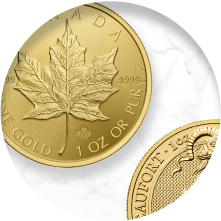
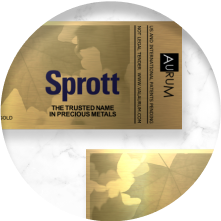

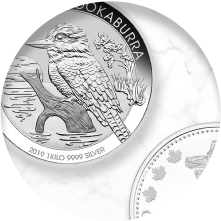
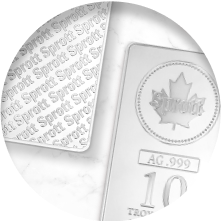

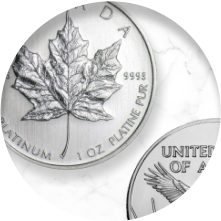

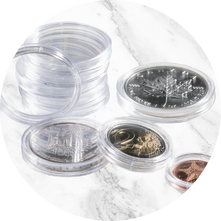
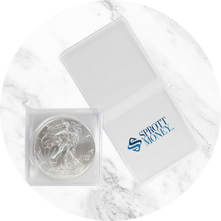



Comments